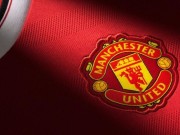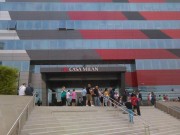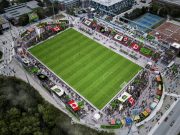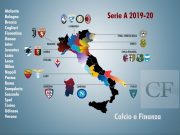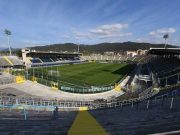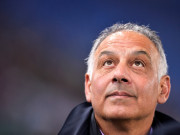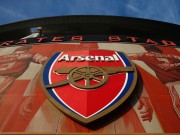Juventus’ current management team have made numerous successful forays into the transfer market since 2011, both frequently bringing players in on free transfers or for nominal fees (Pirlo, Pogba, Khedira, Barzagli, Llorente, Coman) and selling other players on for a significant profit (Vidal, Pogba). Aware of the importance of player trading in the management – in both sporting and economic terms – of a football club, club directors Marotta and Paratici give particular attention to this area, including from an organisational point of view by maintaining a structure of national and international scouts.
Successful player trading is an important stimulus for a football club to improve its results, as a club is essentially a business, and, using a sustainable business model, its management needs to aim to achieve acceptable results on the pitch that are in accordance with the club’s economic and financial resources.

This argument has been analysed in depth by Alfonso Riccardi, a partner in YourCfo Consulting Group (an initiative created by a number of executives with international experience in the area of business finance) in his book “How to buy and manage a football club in Italy”, co-authored with Vittorio Vetrano.
One of the aspects of Juventus’ transfer business in recent years that hasn’t been looked at in much detail is their ability to achieve optimum results when buying and selling players who never make an official first team appearance (the following statistics come from Juventus’ official club statements and, for the less well-known players, from specialist transfer market websites).
In particular, as shown in the table below, the management of just three players (Ciro Immobile, Domenico Berardi and Simone Zaza) generated a capital gain of around €30 million (in Zaza’s case, only transfers carried out up to and including the resolution of his co-ownership deal with Sassuolo in June 2014 are counted – he played for Juventus in the 2015/16 season).
Going into more detail, Immobile, who was bought for around €80,000, registered a profit of around €12 million – 50% of his rights were bought by Genoa in January 2012 for €4 million, then the other half were sold to Torino in June 2014 for €8 million.
Looking at Berardi, 50% of his rights were bought in September 2013 for €4.5 million plus half of Marrone; as a product of the youth system, this therefore generated a capital gain of around €4.4 million. Later, in June 2015, his co-ownership with Sassuolo was resolved for a total of €10 million, generating a profit of €7.3 million.

Finally, in Zaza’s case, he was bought from Sampdoria in July 2013 for €3.5 mln but was immediately sold on a co-ownership deal worth €2.5 mln to Sassuolo, creating an initial net profit of around €0.75 mln. Later, in June 2014, he was signed permanently by Sassuolo for another €7.5 million, generating a capital gain of €5.4 million.
A few other, less significant, transfers should be added to these three, although they may in fact be even more evidence for Juventus’ significant ability to scout and evaluate young players. Most notably, the transfers of Alberto Masi and Mbaye Diagne generated revenue (through loans and sales) of €3.5 million.
The Diagne transfer typifies their approach: the naturalised Ivorian striker (he is of Senegalese origin) was spotted by Paratici in the summer of 2013 at Bra (a Lega Pro side) and signed for just €30,000. Without ever playing a game for the Bianconeri, after a series of loans (free loans to French side Ajaccio and Belgian teams Lierse and Westerlo, and for a fee of €200,000 to Saudi Arabia’s Al Shebab) in August 2015 he was sold to Ujpest (a first division Hungarian side) initially on loan with an obligation to buy for a fee of €200,000. Juventus had a clause entitling them to 50% of a future sale, which occurred in February 2016 when Chinese club Tianjin Teda bought him for €1.8 million; €900,000 therefore went to Juve.
In short, considering both the loans and the permanent transfer fee, from an initial €30,000 investment in summer 2013 Juventus subsequently earned €1.3 million; objectively speaking, an excellent job from a financial perspective.
In Masi’s case, 50% of his rights were sold for €2 million in July 2013, and the remainder were sold in January 2015 for €1.5 million as part of the deal to sign Alberto Brignoli.
The importance of Juventus’ prudent management in buying and selling players can be underlined by highlighting the fact that from July 2011 to June 2016, the cumulative value of their total revenue minus operating costs plus the result of player trading comes to -€15.1 million (this total is in itself negatively affected by the operating loss posted in 2011/12. The last three budgets have been comfortably profitable).
Without the five transfers illustrated above, this calculation would give a figure of around -€43.5 million (the €33 million brought in from capital profits and loan fees is subject to amortisation on the values of the five players, however the value of this is not very significant – around €4.5-5 million. There was only a negligible value to the amortisation of Immobile, Marrone and Diagne).
Juventus’ example, which in order to be replicated by other clubs clearly requires a well-organised and competent organisational structure, is testament to the positive effects that careful management of player trading and scouting can bring to professional football clubs in Italy, which have been suffering from serious financial problems for many years.
Among other things, as shown by Riccardi and Vetrano in their aforementioned book, the effects of knowledgeable scouting teams – as the result of their identification of players either to bring into or to sell from the first team – can be wide-ranging, including:
- Improving the reputation and the image of the club
- Enhancing the value of the club’s youth sector and improving its results
- Reducing the average cost of players’ wages
- Reducing the cost of buying players
- Reducing the average age of the squad
- Improving player trading


